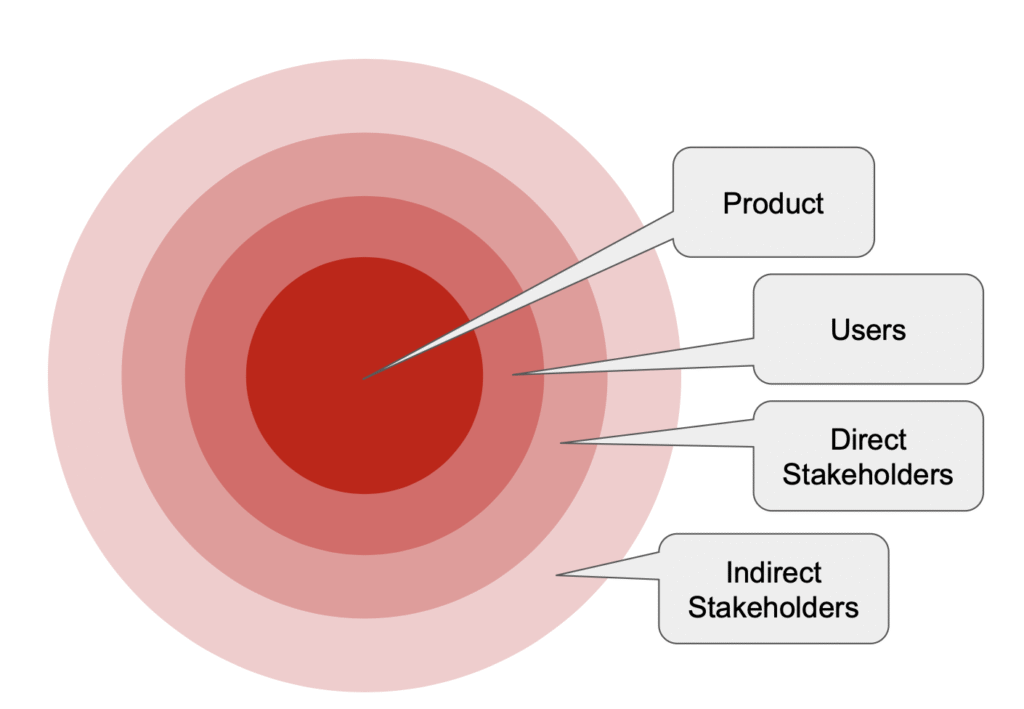A stakeholder map is a visual tool used to identify and analyze the stakeholders of a project, initiative, or product. It’s typically drawn as a diagram or chart that outlines the key participants, their interests, and the relationships between them.
When a Stakeholder Map Can Be Useful
- Managing stakeholder expectations
It provides a complete picture, helping you better understand the needs and requirements of everyone involved. - Developing a communication strategy
By grouping stakeholders on the map, you can define how to communicate with each group — which channels to use, what tone to adopt, and what messages to deliver. - Focusing decision-making
The map helps businesses understand who is involved in development, who influences the product, and who the end users are — and ensures their interests are considered. - Testing hypotheses
It clarifies which group of stakeholders is affected by your hypothesis and who should be included in the testing phase.
How to Build One
There are no strict rules for creating a stakeholder map. In fact, you’re encouraged to adapt it to each specific case: add parameters, change colors and fields — make it your own.
Here’s an example of a classic stakeholder map structure with four key zones:
- The product itself
- Users
- Direct stakeholders — those who directly impact user experience
- Indirect stakeholders — those who don’t participate directly but could potentially disrupt the relationships within the map

Tips for Creating a Stakeholder Map
- Create the map with your team
The more perspectives you include, the more comprehensive the stakeholder list will be. - The more stakeholders, the better
Don’t hesitate to go into detail when outlining different segments. - Don’t treat it as a static document
Your stakeholder map should be a living tool — something you update regularly and use as a foundation, not just as a report.




